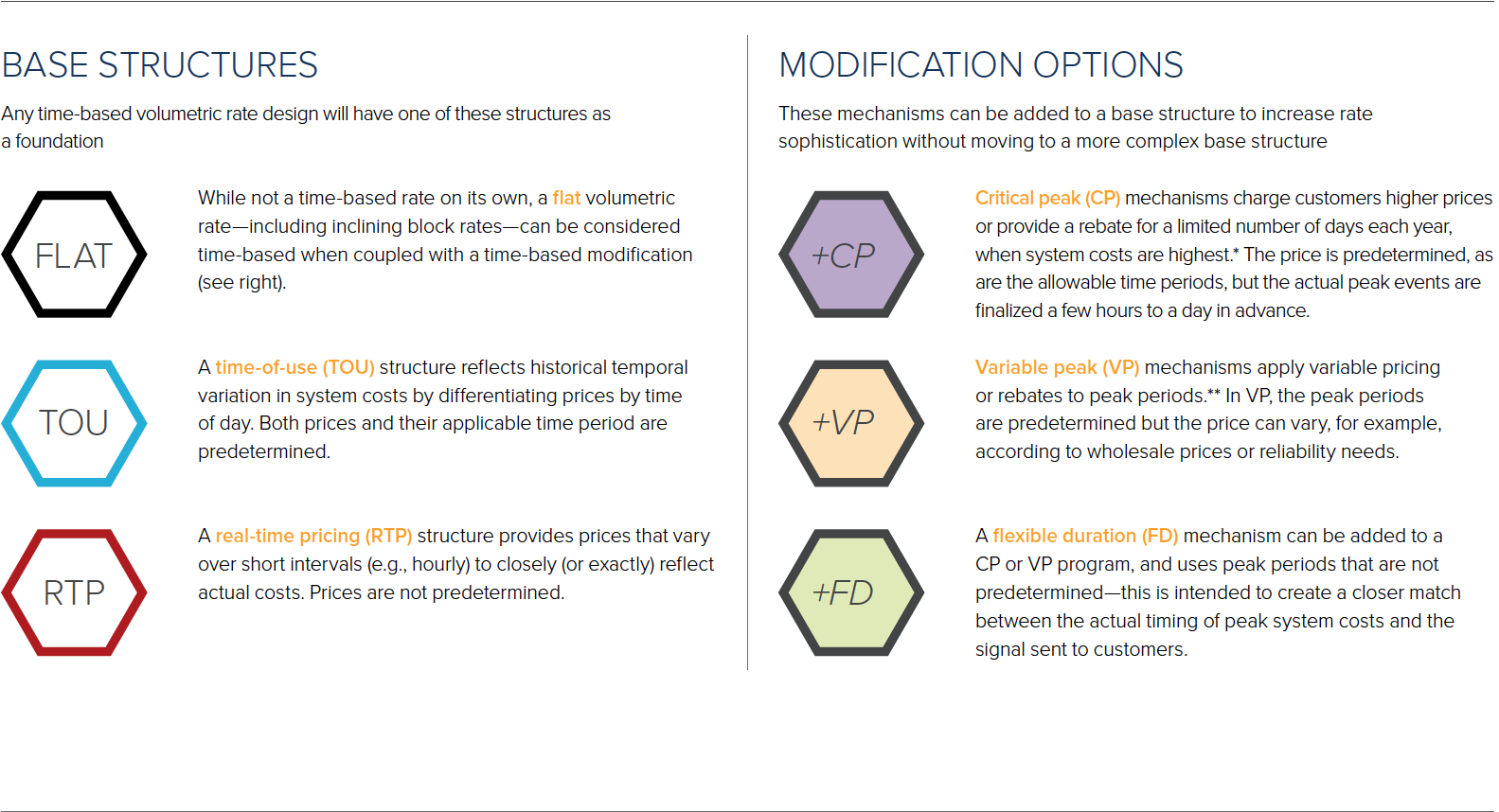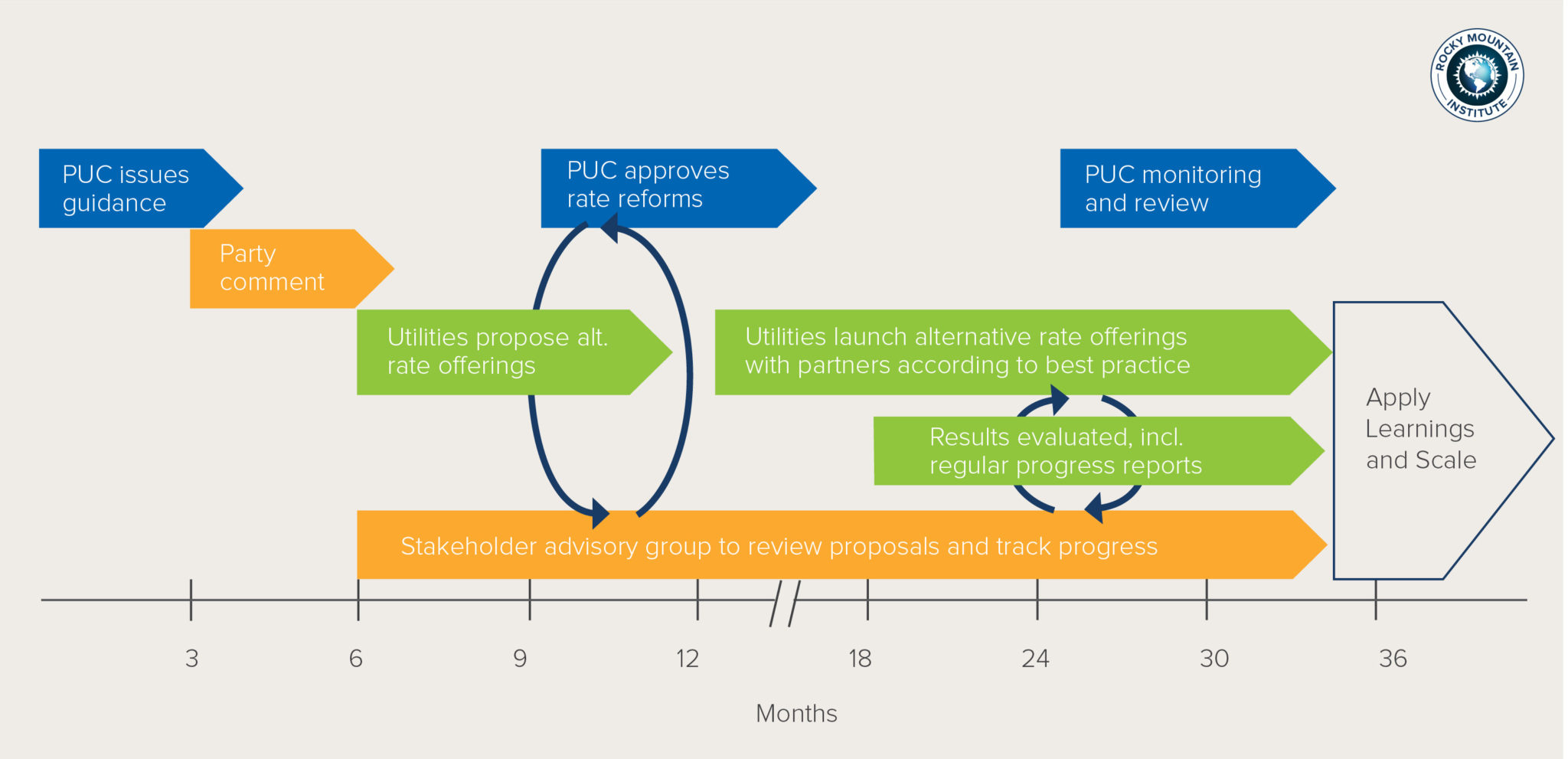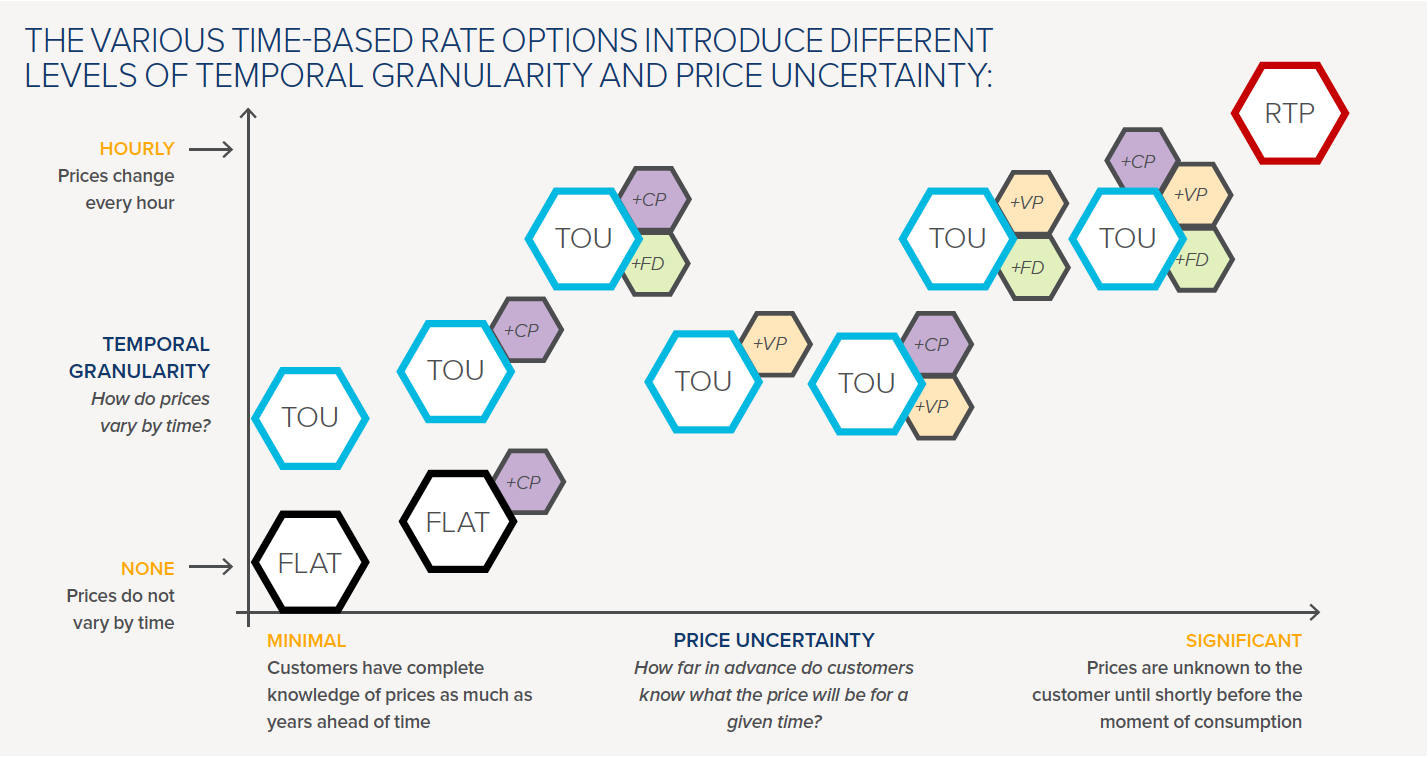
RMI Recommends Actions and Process for Rate Design Reform in Ohio
Electricity rates are the signal by which the costs of power generation and delivery are translated to customers. Traditionally, costs are represented as rough averages across all hours, days, and seasons (as well as across locations and customers). Increasingly, time-based rates are being turned to for the opportunity to more accurately represent temporal variation in costs of production and delivery of electricity, as well as to shape electricity demand profiles to better support grid economics and need. These trends and rate design fundamentals are described in a recent Rocky Mountain Institute report to the Public Utilities Commission of Ohio (PUCO) in Ohio’s PowerForward initiative.
Launched by the PUCO in April 2017, PowerForward has explored options for how Ohio regulators and utilities can transform grid operations to create a modern electricity system while enhancing customers’ experiences. Through a series of workshops and other activities, PowerForward has covered a broad range of topics, including the technical options for grid upgrades and questions about regulatory and business model reforms to support those. In evaluating PowerForward topics explored over the past year, the PUCO recognized the potential for dynamic pricing structures to better align costs causation with rates and to reduce energy consumption by customers. But as we detail in our report, new pricing structures don’t lead to better outcomes in all cases, and it’s important to follow constructive processes and apply best practice to design good rates.
Time-based rates can provide a price signal that more accurately reflects the changing cost of energy production and delivery throughout the day and between days or seasons. When designed well, time-based rates have also been shown to achieve significant peak load reduction without compromising customer satisfaction. RMI laid out the basic and modified structures for time-based rates in prior research. Depending on how prices vary by time (temporal granularity) and how far in advance customers know what the price will be for a given time (price uncertainty), time-based rates can range from basic time-of-use (TOU) rates, which incentivize load shifting in all days, to flat or TOU rates coupled with modifications for critical peaks and other modifications that incentivize peak reduction targeted to critical days or hours of the year.

Although well-designed time-based rates can be valuable insofar as they better reflect system cost and support grid flexibility, poorly designed rates can be confusing or punitive to customers and fail to achieve program objectives. In recent years, a number of better-designed time-based rates have been announced (see Xcel’s residential TOU pilot in Minnesota, for example), which provide examples to draw upon for improved program design.
Opportunities for improved rate design can also be missed due to a procedural bias in the utility sector to perpetually explore, ask, and talk, rather than move ahead in a learn by doing manner. This is not to suggest immediate, sweeping reforms that may upset markets and impose undue costs on customers. Rather, there are useful, no-regrets actions that regulators can take to accelerate utility and grid modernization. Rate design is an essential foundation for broader power sector reforms, and immediate work should begin to update rates and build experience in setting electricity prices that better support a flexible, affordable grid.
Based on this principle, RMI recommended certain actions and an associated timeline for the PUCO to consider as it undertakes rate design reform activities. The report includes the following recommended actions:
- Issue targeted guidance that identifies commission expectations and objectives for rate design. Utilities and parties to rate design proceedings benefit from a clear understanding of what regulators seek from rates and what criteria will be used to evaluate rate proposals.
- Invest in resources and expertise to ensure that the commission is equipped to appropriately evaluate and respond to proposals and other rate design developments. Under-resourced regulators face an enormous challenge to discern the meaning and implications of proposed changes, as the issues and market dynamics are more complex now than ever, and special interests introduce a risk that policy changes may not reflect customers’ and society’s interests.
- Require utilities to conduct pilots for time-based rates that follow established best practice. Pilots or demonstration programs are an opportunity to experiment and move quickly to understand and refine program designs before scaling to broader application.
- Evaluate the bill impact of new rate designs to understand likely impact on customers. As utilities or other stakeholders propose new rates—both updated standard offer rates and alternative rate structures like time-of-use—the commission needs to understand their cost and value impacts to a range of customers.
In order to make actionable progress, rate reform should be a collaborative process that leverages the experience and input of key stakeholders and practitioners, as well as lessons learned across the industry. Processes should also incorporate explicit attention to learning mechanisms and scaling, to avoid the pitfall of isolated pilot programs that have limited uptake. The RMI report suggests a procedural timeline for the PUCO, which is applicable to rate reforms in many other states as well.

There are, of course, alternative approaches and variations on this timeline that can be selected depending on each state’s or utility’s objectives and level of ambition for dynamic rate structures. For example, California is in the process of migrating to default TOU rates for residential customers. Beginning with legislation that led to a California Public Utilities Commission–initiated “Residential Rate Redesign” proceeding in 2013 to evaluate options, the commission subsequently ordered utilities in 2015 to conduct opt-in TOU pilots in preparation for default TOU offerings beginning in 2019 (i.e., six years from procedural initiation to full implementation of default TOU rates, with studies and pilots along the way).
Whatever the precise timeline, the key is to maintain high standards for the application of best practice and emerging insights from across the industry. Significant attention by utilities, stakeholders, and regulators alike is needed to ensure that rates are not degraded by bad design and ineffective implementation measures. At the same time, through collaborative approaches built upon clearly established regulatory and policy expectations, well-managed dynamic rate designs can support modern grid needs as well as increased customer choice.
Click here to download Moving to Better Rate Design: Recommendations for Improved Rate Design in Ohio’s PowerForward Inquiry.

